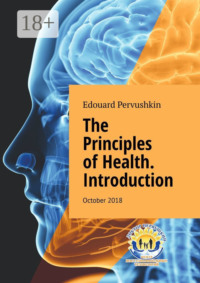Loe raamatut: «The Principles of Health. Introduction. October 2018»
Midagi läks valesti, proovige hiljem uuesti
€5,18
Žanrid ja sildid
Vanusepiirang:
18+Ilmumiskuupäev Litres'is:
07 september 2021Objętość:
72 lk 4 illustratsiooniISBN:
9785005316820Õiguste omanik:
Издательские решения